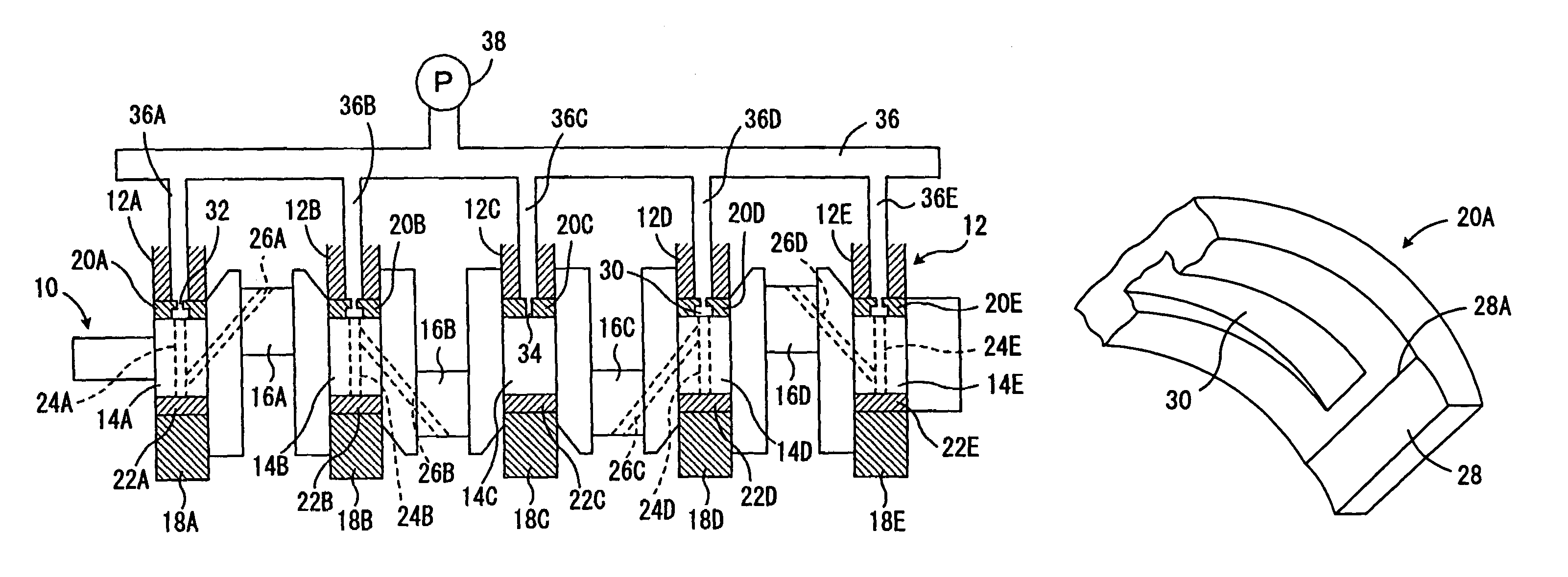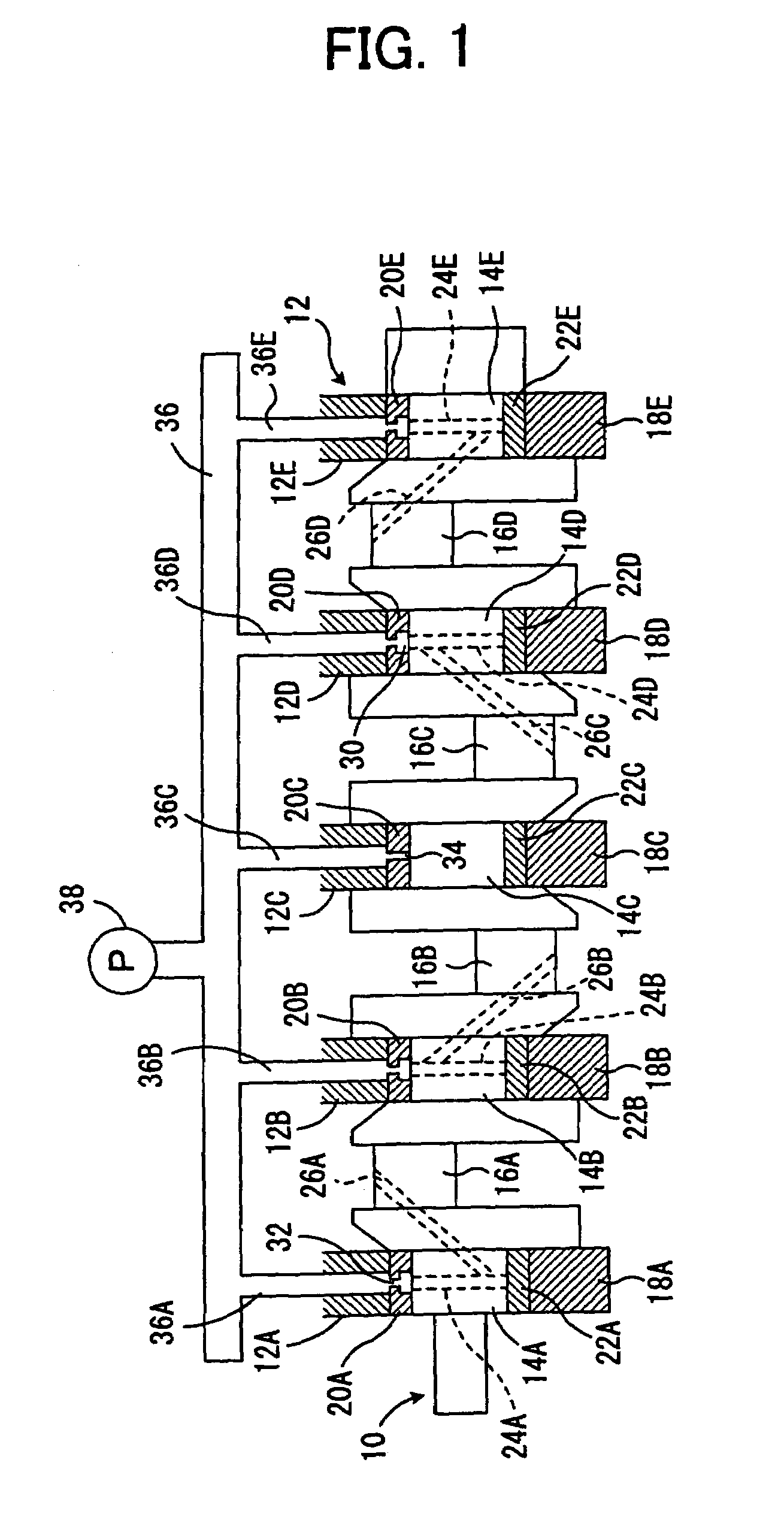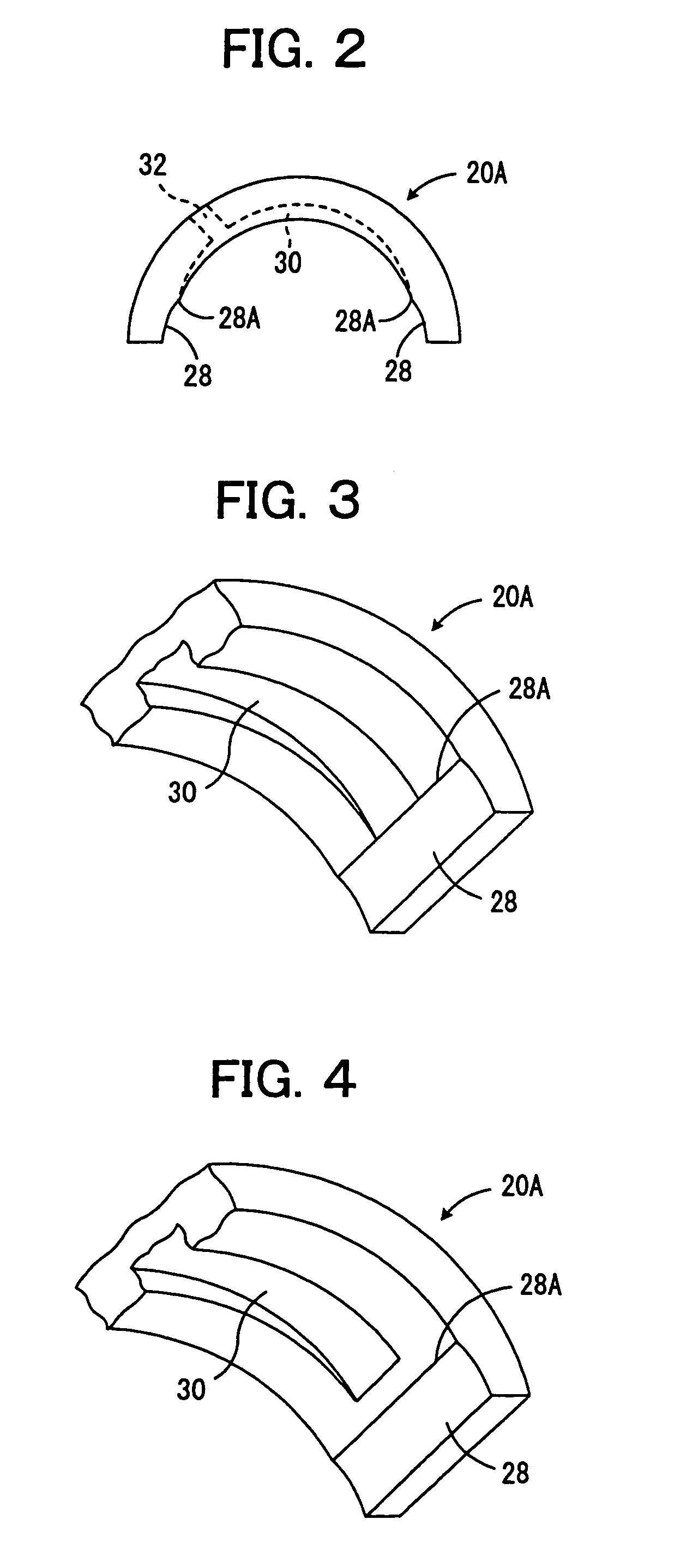Oil-feeding device for an engine crankshaft
a technology of oil feeding device and crankshaft, which is applied in the direction of crankshaft, machine/engine, sliding contact bearing, etc., can solve the problems of increased cost and difficulty in mounting the device on the vehicle, increase the size of the oil pump, so as to reduce the amount of lubricating oil leaking and increase the friction of the bearing member
- Summary
- Abstract
- Description
- Claims
- Application Information
AI Technical Summary
Benefits of technology
Problems solved by technology
Method used
Image
Examples
first embodiment
[0029]FIG. 1 is a diagrammatic view showing a structure of a first embodiment of an oil-feeding device of a crankshaft according to the present invention, applied to an in-line four-cylinder gasoline engine; FIG. 2 is a side view showing one of the upper bearing members shown in FIG. 1; and FIG. 3 is an enlarged partial perspective view showing an end of the upper bearing member shown in FIG. 2.
[0030]In FIG. 1, the reference numeral 10 shows an engine crankshaft, which is rotatably supported by five supporting portions 12A-12E of a cylinder block 12. The crankshaft 10 has five main journal portions 14A-14E and four pin portions 16A-16D, which are located between the main journal portions, offset radially therefrom and circumferentially relative to one another around the axis, and the main journal portions 14A-14E and pin portions 16A-16D are integrally connected to one another with arm portions.
[0031]Caps 18A-18E each are fixed to the lower ends of the supporting portions 12A-12E of...
second embodiment
[0043]FIG. 5 is a diagrammatic view of a structure showing a second embodiment of an oil-feeding device of a crankshaft according to the present invention, applied to an in-line four cylinder gasoline engine. In FIG. 5, the same parts as in FIG. 1 are designated by the same reference numerals as in FIG. 1.
[0044]In this second embodiment, as in the main journal portion 14C in the above-mentioned first embodiment, no through passage is formed in the main journal portions 14A, 14C and 14E. Further, as in the upper bearing member 20C of the main journal portion 14C in the first embodiment, no oil groove 30 is formed in the upper bearing members 20A, 20C and 20E of main journal portions 14A, 14C and 14E, but, communicating pores 34 are formed therein.
[0045]Moreover, the end of the pin oil-feeding passage 26A is connected to the end of the through passage 24B opposite to its end to which the end of the pin oil-feeding passage 26B is connected. The end of the pin oil-feeding passage 26D is...
PUM
 Login to View More
Login to View More Abstract
Description
Claims
Application Information
 Login to View More
Login to View More - R&D
- Intellectual Property
- Life Sciences
- Materials
- Tech Scout
- Unparalleled Data Quality
- Higher Quality Content
- 60% Fewer Hallucinations
Browse by: Latest US Patents, China's latest patents, Technical Efficacy Thesaurus, Application Domain, Technology Topic, Popular Technical Reports.
© 2025 PatSnap. All rights reserved.Legal|Privacy policy|Modern Slavery Act Transparency Statement|Sitemap|About US| Contact US: help@patsnap.com



